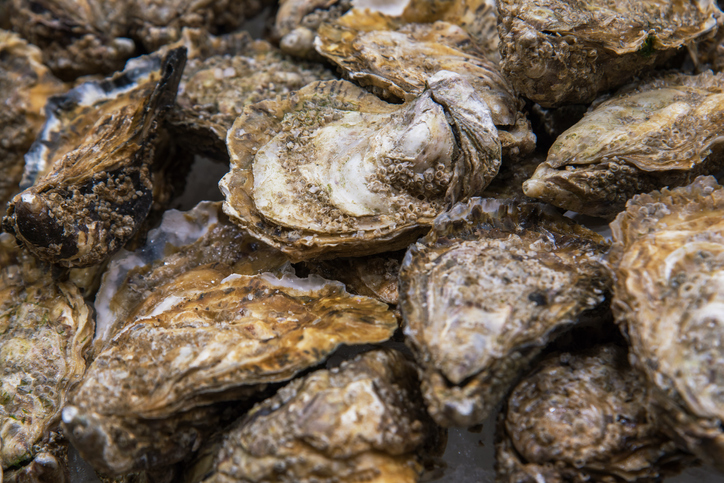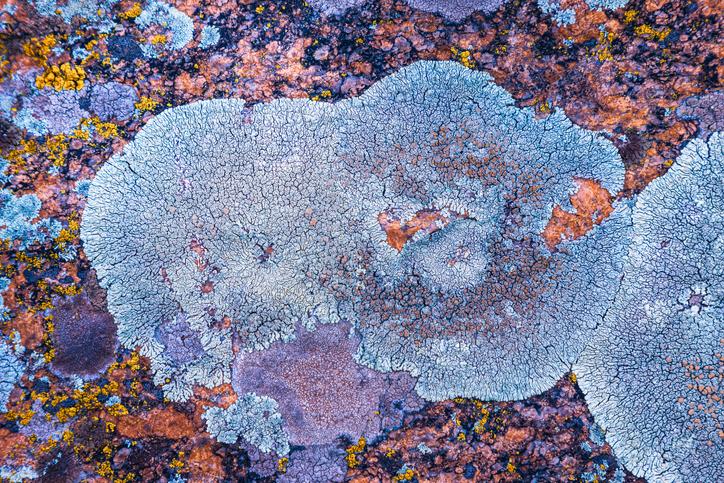New microbes discovered in a mussel, pine trees and lichen
Posted on December 22, 2021 by Matt Bassett
Each month, the Microbiology Society publishes the International Journal of Systematic and Evolutionary Microbiology (IJSEM), which details newly discovered species of bacteria, fungi and protists. Here are some of the new species that have been discovered and the places they’ve been found.
As it’s December, we tried to find the most Christmassy microbe possible. While there were no microbes isolated from turkeys or Christmas crackers, a research group did discover a new microbe in rhizospheric soil of a pine tree, which they have named Pinibacter aurantiacus. The soil was sampled in Anseong, Republic of Korea, and colonies were described as orange-coloured, smooth and spherical.

The rhizosphere is the area of soil surrounding the roots of the plant. It’s an area where many new microbes are discovered, as the biological and chemical features of the soil are different to the surrounding soil, as it is directly influenced by the roots. As well as P. aurantiacus, a group of researchers discovered Chitinophaga rhizophila in the rhizosphere soil of banana.
One of the most interesting environments the earth has to offer is deep-sea hydrothermal vents. Characterised by extreme heat, pressure and lack of light, deep-sea hydrothermal vents are an incredibly extreme place to live. However, there are microbes that have perfected living there. A research group discovered Crassaminicella thermophila from a deep-sea vent on the Southwest Indian Ridge at a depth of 2730m. C. thermophilia was described as anaerobic, heterotrophic and moderately thermophilic. Researchers also discovered Desulfomarina profundi, a mesophilic, strictly anaerobic, chemolithoautotrophic sulphate-reducing bacteria. D. profundi was isolated from a chimney sample collected from a deep-sea hydrothermal vent at the Suiyo Seamount in the Izu-Bonin Arc, Japan.

Marine environments and organisms were the source of many new microbes this month. Paenihalocynthiibacter styelae is a new microbe that researchers isolated from the intestine of a stalked sea squirt (Styela clava) collected from the South Sea in the Republic of Korea. Researchers also discovered a new microbe from the flat oyster (Ostrea edulis). The oyster was collected from Concarneau bay, Finistère, France. The researchers named the new microbe Pseudoalteromonas ostreae and described the colonies as cream-orange coloured, convex and opaque. The second mollusc to yield a new microbe this month, was the Korean, or hard-shelled, mussel (Mytilus coruscus). The sample was collected from Ulleung Island, Ulleung-gun, Gyeongsangbuk-do, Republic of Korea. The microbe was named Vibrio ulleungensis, members of the genus Vibrio are commonly isolated from aquatic environments, usually from marine environments, both as free-living bacteria and as symbionts or parasites of fish, crustaceans and molluscs.

Microbes were also discovered in terrestrial environments and organisms this month. Actinomadura violacea is a new species, isolated from a lichen sample on rock, collected from Chiang Rai Province, Thailand and had violet-coloured colonies. The genus Actinomadura was first described in 1970 and contains 70 recognised species. Researchers also isolated Microbacterium stercoris this month. Species from the genus Microbacterium have been isolated from a wide range of sources, including water, humans, dairy products and insects. M. stercoris was isolated from cow dung collected from Shangzhi, Heilongjiang Province, PR China. The last new species this month was isolated from horse blood. Researchers sampled the blood from Giessen, Germany and named the species Devosia equisanguinis. The researchers described D. equisanguinis’ colonies as small, circular and cream-coloured.

